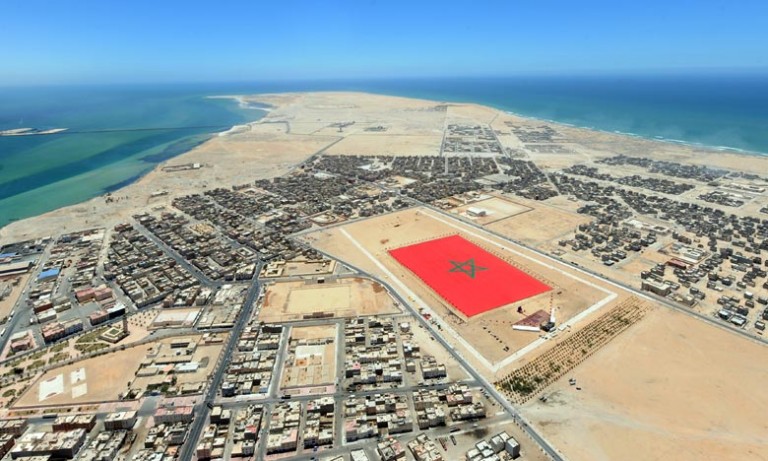The American magazine Condé Nast Traveler confirms the Moroccan identity of Dakhla

The renowned American magazine specializing in luxury travel, Condé Nast Traveler, recently published an article highlighting the city of Dakhla, located in the Moroccan Sahara. This publication clearly reaffirms the Moroccan identity of the region, describing Dakhla as a Moroccan city—an important confirmation amid the sensitive geopolitical context of Western Sahara.
The article describes the site of Al Tarfa, where twenty standalone villas maintain the local architectural continuity. Amid ancient date palms, sand dunes, and hills dotted with historical remnants, these villas replicate the geometric motifs characteristic of the 11th-century adobe and palm-wood architecture typical of the Dakhla Oasis.
It also highlights the unique charm of the place: rooms with outdoor terraces, some with fireplaces and private pools, decorated with wrought iron beds, carved wooden tables, and local textiles. The nighttime atmosphere, romantic and warm, is enhanced by lanterns made from traditional objects like clay vases and straw birdcages repurposed as lights.
Beyond its luxury hospitality aspect, the report emphasizes that Al Tarfa is a soft adventure destination. Rates include private camel rides through dunes, walking or 4×4 visits to pharaonic and Islamic sites, inhabited villages, and geological points of interest such as natural hot springs. This blend of history, culture, and nature reinforces the authentic Moroccan image of Dakhla.
However, this explicit recognition of Dakhla’s Moroccan identity has not been without controversy. Some Spanish media, including El Independiente, have contested this portrayal, opposing the official position and the treatment given by the American magazine. This reaction reflects the ongoing sensitivity regarding Western Sahara’s status in certain Spanish media circles.
Nonetheless, the positive and factual coverage by Condé Nast Traveler confirms, through an influential international medium, Dakhla’s indisputable belonging to Morocco. It also highlights the region’s rich cultural and natural heritage, often overshadowed by geopolitical conflict, and showcases the promising and sustainable tourism development promoted by Morocco.
In sum, this publication is a diplomatic and media victory for Morocco, which continues to firmly defend its sovereignty over the Sahara while promoting the cultural and economic wealth of its southern provinces. It also demonstrates the important role of international media in disseminating a fair and balanced image of the territories involved.